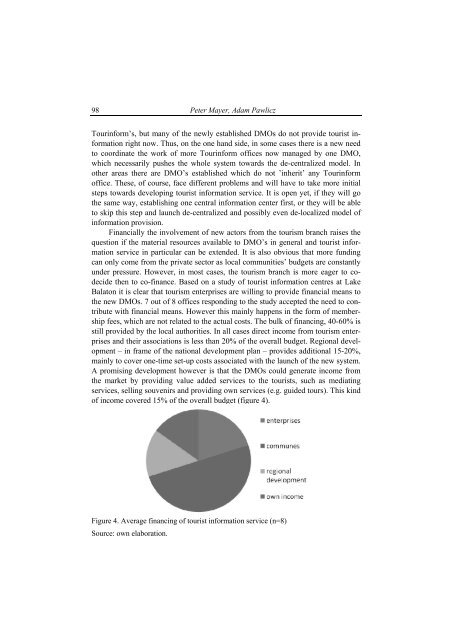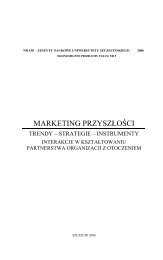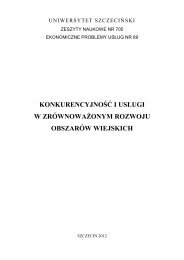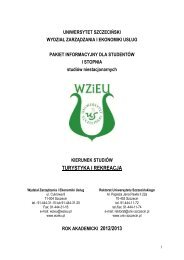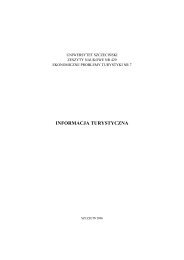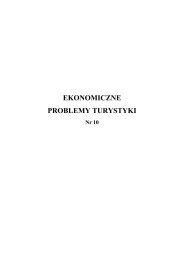Zeszyt naukowy - caÅoÅÄ - WydziaÅ ZarzÄ dzania i Ekonomiki UsÅug
Zeszyt naukowy - caÅoÅÄ - WydziaÅ ZarzÄ dzania i Ekonomiki UsÅug
Zeszyt naukowy - caÅoÅÄ - WydziaÅ ZarzÄ dzania i Ekonomiki UsÅug
Create successful ePaper yourself
Turn your PDF publications into a flip-book with our unique Google optimized e-Paper software.
98<br />
Peter Mayer, Adam Pawlicz<br />
Tourinform’s, but many of the newly established DMOs do not provide tourist information<br />
right now. Thus, on the one hand side, in some cases there is a new need<br />
to coordinate the work of more Tourinform offices now managed by one DMO,<br />
which necessarily pushes the whole system towards the de-centralized model. In<br />
other areas there are DMO’s established which do not ’inherit’ any Tourinform<br />
office. These, of course, face different problems and will have to take more initial<br />
steps towards developing tourist information service. It is open yet, if they will go<br />
the same way, establishing one central information center first, or they will be able<br />
to skip this step and launch de-centralized and possibly even de-localized model of<br />
information provision.<br />
Financially the involvement of new actors from the tourism branch raises the<br />
question if the material resources available to DMO’s in general and tourist information<br />
service in particular can be extended. It is also obvious that more funding<br />
can only come from the private sector as local communities’ budgets are constantly<br />
under pressure. However, in most cases, the tourism branch is more eager to codecide<br />
then to co-finance. Based on a study of tourist information centres at Lake<br />
Balaton it is clear that tourism enterprises are willing to provide financial means to<br />
the new DMOs. 7 out of 8 offices responding to the study accepted the need to contribute<br />
with financial means. However this mainly happens in the form of membership<br />
fees, which are not related to the actual costs. The bulk of financing, 40-60% is<br />
still provided by the local authorities. In all cases direct income from tourism enterprises<br />
and their associations is less than 20% of the overall budget. Regional development<br />
– in frame of the national development plan – provides additional 15-20%,<br />
mainly to cover one-time set-up costs associated with the launch of the new system.<br />
A promising development however is that the DMOs could generate income from<br />
the market by providing value added services to the tourists, such as mediating<br />
services, selling souvenirs and providing own services (e.g. guided tours). This kind<br />
of income covered 15% of the overall budget (figure 4).<br />
Figure 4. Average financing of tourist information service (n=8)<br />
Source: own elaboration.


